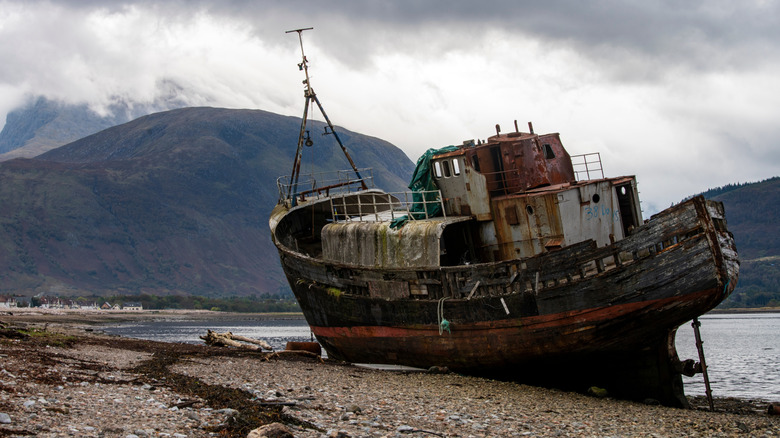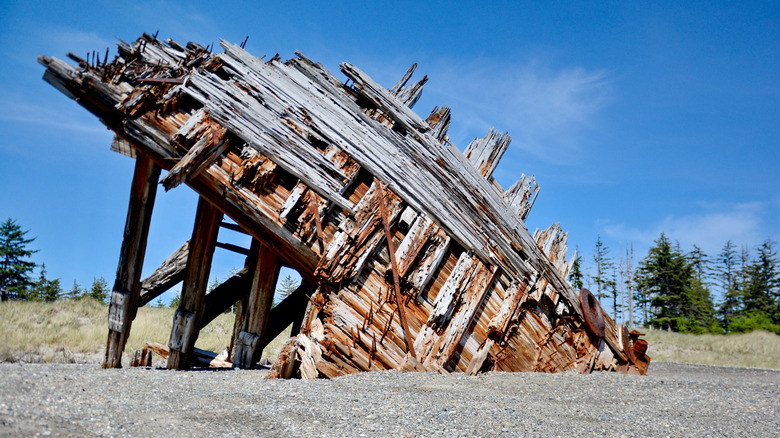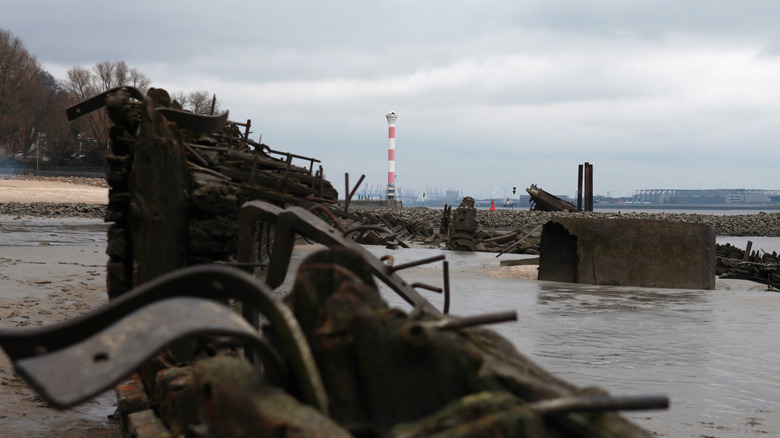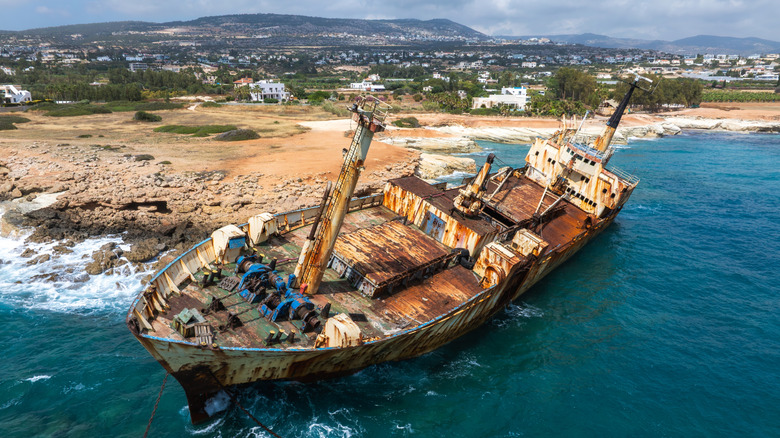5 Incredible Shipwrecks You Can Visit And Explore
Shipwrecks portray something greater than their physical self. Beyond the wooden and steel ruins lie the great tales of adventures that connect us to the struggles and bravery of an era long gone. The majestic shipwrecks are physical proof that once there lived sailors and seafarers who were not scared of the sea's dangers and faced them with full courage.
There are several fascinating shipwrecks abandoned around the world that are beached, off river banks, or in relatively shallow, snorkelable water. For beached and tidal wrecks, the best time to visit is during low tide conditions for maximum visibility. Many famous shipwrecks may soon disintegrate into nothing, so if you are an enthusiast, visit the historic ones before they completely disappear.
Pesuta Shipwreck
Pesuta was originally intended to be a wood-hulled steam freighter, but it met an unfortunate fate in 1928. The ship ran aground in Haida Gwaii, Canada, and could not be restored despite continued efforts, leading to its abandonment. The wreck has sat there ever since, becoming a popular tourist spot.
If you are in Haida Gwaii, do not miss this place. The path to get to the site is no less than an adventure itself. You will have to take a six-mile trail through the Naikoon Provincial Park — a luscious green rainforest — and toward the Tlell River, another wondrous view, in search of these mighty ruins.
It might take you about three to four hours to finally reach the shipwreck site, but the experience will be worth the sweat and effort. Alternatively, you can bike the trail. Once there, you will see the giant wooden ruins of the Pesuta ship, partially sunk into the white sands beneath. You can explore the complete remains and take in the arresting views of the British Columbia coast.
Kittiwake Shipwreck
The terrific history behind the Kittiwake is that it was an ex-US Navy marine rescue vessel that served for the armed forces between 1945 and 1994. Unlike other ships, the Kittiwake was intentionally sunk to the ocean floor in 2011 off the coast of Seven Mile Beach in the Grand Cayman, Cayman Islands. Today, it is an artificial reef popular with marine enthusiasts.
The Kittiwake wreck can be spotted at 15 feet and stretches to a maximum of 65 feet below the surface, which is not very deep. Therefore, it is possible to dive into the deep blue waters and swim through the ruins, mesmerized by the marine life that grows and darts around the metal remains.
During the dive, brace yourself to meet a variety of fish, turtles, stingrays, or even eels. It was a five-deck ship, so there's lots of exploring to do.
Blankenese Shipwreck
The Blankenese shipwrecks are located up the Elbe River from the center of Hamburg, Germany's second largest city. These two wrecks — the Polstjernan and Uwe — are visible from the riverbanks year-round. Polstjernan was a Finnish four-masted gaff schooner that caught fire in 1926 en route to England. While a major part of the abandoned ship is lost to the cruelty of time and weather, the wooden structure still rests on the beach, and you can touch it to explore in more depth.
The Uwe, meanwhile, is a barge that has been sitting upturned in the Elbe since an accident in 1975. It is half-submerged into the sand and only the front half pokes out of the water, along with two large wooden sticks on its side. Uwe's wreck is more intact than the Polstjernan, and is visible from the nearby car park as well. Both of these hulls have a little distance between them, so much that you can capture the two in a single frame.
To get there, head toward Falkensteiner Ufer, a sandy beach near several bus stops. Be cautious to avoid the waters since they can be cold and dangerous for swimming without proper safety and supervision.
Edro III Shipwreck
The Edro III is a huge shipwreck that can be explored if you are in Paphos, Cyprus, between the Coral Bay and the Sea Caves. The legend behind these ruins is that Edro III was on its way to Rhodes, Greece, when the entire ship ran aground on the rocks in Paphos in 2011. Since then, the ship has made the clear blue waters of the Coral Bay its final resting place — tilted at a 12-degree angle on the rocks.
Unlike other half-visible hulls, this one is completely above the surface, so you can get a full view of the ship. Take the bus route to Coral Bay, after which there is an approximately 45-minute walk to the wreckage site. The ship is located just a few meters away from the coast, so you can park your car on the road and swim a short distance to get on board. You can hop inside the wreck and explore every part of it with your own senses of touch and sight. Of course, proper safety gear and precautions are essential. The Edro shipwreck is dramatic and picturesque, no matter how you approach it — especially during golden hour.
SS Sapona
Commissioned by President Woodrow Wilson, the SS Sapona was meant to serve during World War I as a troop transport. However, things didn't go as planned, and the ship's structure was only completed after WWI, forcing it to be sold as scrap for goods transport.
In 1924, Sapona was used as a floating base by "Bimini's Rum King," Bruce Bethell, for distributing his liquor supply. During a powerful hurricane in 1926, the ship ran aground off the coast of Bimini Island in the Bahamas. The Navy used the vessel for target practice during World War II, along with troops from the Army and the Air Force, destroying major chunks of the concrete ship.
Today, the skeletal remains host a diverse array of marine life, attracting many divers and snorkelers. The artificial reef is about 20 feet deep and numerous jagged edges are poking out across the wreck, so you'd better watch out.



